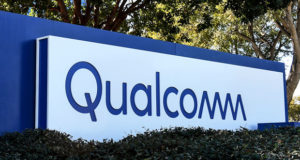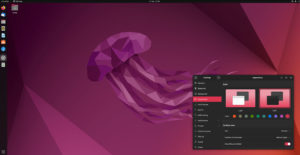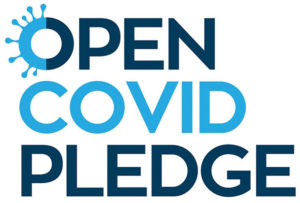
Citrix Online, a division of Citrix Systems, offers remote connectivity tools to the small and medium-sized business (SMB) market. These include GoToMyPC, which offers remote access; GoToMeeting, an online collaboration tool; GoToTraining, an online training package; and GoToWebinar.
Most recently, Citrix bought up Paglo and stepped into the managed services software market with a new product. Not hard to guess the name: GoToManage.
TechNewsWorld caught up with Citrix Online president Brett Caine for a Q&A session to discuss his strategy and his plans for the company.
TechNewsWorld: Citrix Online has branched out into several areas now from its original product,”GoToMyPC. How would the company describe itself?
Brett Caine:
As one of the leading SaaS (Software as a Service) providers in the marketplace, our goal is to provide our customers with easy solutions to solve their specific business issues around a set of purpose-built applications.
Rather than build a single product and have it meet all the needs of every department, we build purpose-built solutions for the needs of every department. After GoToMyPC, we brought out GoToMeeting, then we said marketers need something more purpose-built for managing events so we built GoToWebinar.
Then we expanded into online training where we introduced some easy-to-use, easy-to-join online applications for up to 200 attendees. This lets corporate trainers manage courses on the Internet and in the cloud. It came from a conversation with one of our customers.
TNW: So do you model yourselves after anyone?
Caine:
Our strategy focuses on SMBs who don’t have IT resources and are trying to resolve complex problems at a predictable cost. There are few companies that have done that successfully without being pulled into the enterprise.
Intuit has been very effective in doing that — it’s primarily focused on the SMB, building solutions that meet a particular problem set of customers and expanding into adjacent areas to round out their solutions as appropriate. But most of the companies in the SaaS world tend to have an eye on the enterprise as the greatest opportunity there is.
I would much rather sell to 10,000 small businesses rather than one or two large ones, even if they have the same number of users.
TNW: Why is that?
Caine:
First of all, there are many more companies in the SMB field.
Second, when you begin to adhere to the needs of larger companies, you have to fulfill a set of feature requirements that inherently make it difficult to keep things simple or maintain simplicity because large companies have a set of feature requirements and you have to have the set of things that everybody has concluded you must have.
We decided we weren’t going to add features just to say we have them or to let the larger companies dictate them. We believe less is more, and the larger companies are attracted to us because of that.
TNW: So larger companies are attracted to you after you stood things on their head?
Caine:
Yes. 140 million people worldwide use our products for online meetings every year, and that figure’s growing 40 percent a year. People start saying “This is kinda cool, let me try this, maybe it’s good for my team and my company.”
The simplicity of our product enables the use, and the use enables adoption, and, when you combine that with the flat rate pricing — there are no surprises — companies are saying, “this is a value for my investment, and because I don’t have to train everybody, I can get people to start using it immediately and I can get the value of collaboration.”
TNW: You talk about listening to the customer. Is that a real practice for Citrix Online?
Caine:
Absolutely. Being customer-driven is one of the three core pillars of our strategy. If you come to our call center, you can walk into a listening booth, put on a set of headphones and listen to any call that’s occurring in our call center, whether it’s customers inquiring about product information or calling and asking about clarification of their bill, or calling to cancel, without impeding or intruding upon the agents taking the calls.
Listening in, you can get an enormous amount of knowledge as to how we interact with customers, what do we resolve and solve, and what we don’t. Last week, I personally took calls in the call center anonymously, speaking to customers, and it’s a tremendously insightful experience because you can recognize that the customer is often in a very different place in knowledge and understanding from your tech specialists, and although I might believe our products are easy to use and deploy, we find our assumptions challenged.
TNW: Why do you have a listening booth?
Caine:
It’s for everyone in the organization, not just for senior management, because senior management, including me, can always get lots of handling to make sure that we get to listen in a positive way — it’s for sales people or customer service managers, finance people, visitors.
It’s really designed as a way to get anyone in the company or guests to get a sense of what customer service is like. If you’re a product marketing manager or someone trying to understand some of the issues that people are having, it’s a great way to hear first-hand what those problems are. Now, not all my staff are practicing this — the booth has been there for three or four months, and as people hear more about it, it will be one of those viral things that people use as another tool in understanding the customer experience.
TNW: Your latest move was into the managed services software market, with your purchase of Paglo in February, and now you offer Paglo’s services as GoToManage. Wasn’t that a bit risky, seeing as to how you’re taking on IBM, Microsoft, Aprigo and CA, all of which offer their products as SaaS?
Caine:
We’re already in the IT services business with GoToAssist. The typical IT consultant has 10 or 20 clients, is managing some soft of services distributed across the country or the world, and needs to track devices on the network and to remotely connect to devices and troubleshoot them. This is another example of a set of services that came out of speaking to our customers and having them inform and educate us as to the challenges they have.






























































































Social Media
See all Social Media